- Tokyo Cheapo (繁體中文)

Japanese Stamp Books: The Alternative Traveler's Souvenir
If you’re not into gaudy key rings or personalized chopsticks, there’s a rather unusual way to trace your travels through Japan, and it’s called a goshuincho .

Translated to mean “The Honourable Red Stamp Notebook”, you may have seen goshuincho clutched in the arms of visitors to shrines or displayed carefully at the counters of temples. These small, unassuming notebooks have a long history and are unique by design, making them the perfect souvenir of your trip.

With concertina pages opening to form a scroll covered in bright vermilion stamps and elaborate calligraphy, the simple covers hide a beautiful secret you can add to on each trip. Whether you’re backpacking and have limited space, or enjoy a more traditional reminder of your travels, this is an ideal way to take a part of Japan home with you.
Japan stamp books: The history and culture
Originally believed to have been a way of recording receipts for monetary donations or copies of sutra given to temples and shrines, the books are also thought to have been a way of proving your travel was of a religious nature during strict travel restrictions centuries ago. Most likely a combination of the two, the books have become a way of tracing pilgrimages for Japanese people, whether official (such as the Shikoku 88 Temple Pilgrimage ) or more informal travel between sites. For those on the Shikoku 88 Temple Pilgrimage, some still use white robes, which they have stamped and signed along the way, in place of books.
You may have noticed the love for stamp rallies in Japan, be it at festivals, train stations or department stores, the bright red stamps and ink presses are ready and waiting. A more modern take on the traditional, the concept of collecting and recording is popular from children to pensioners, and provides a certain sense of satisfaction.
Although shrines sell ema (wooden plaques for prayer) or omamori (charms) for everything from studying to marriage, there’s something satisfying about the growing pages of stamps, all similar yet different, all tightly packed into a small unassuming book. As there is no prescribed order or specific collection to achieve, you can begin the longest and most relaxed stamp rally in Japan, stopping at almost any shrine or temple to receive a stamp and create a completely unique collection following your journey in Japan.
The book and stamps
Designed to open concertina style; when extended fully your book will read from right to left, like a scroll. As each red stamp is different and each priest/monk has their own style, no two books are the same. And when you have gathered a few it is interesting to compare the brushstrokes and designs. The books can really vary, from temple designs to traditional patterns or nature themes, some are incredibly rare. For example, a location in Mt. Koya has covers made of solid wood from the ancient and sacred Kii mountain range forests.

The black calligraphy has four main parts: the right side of the page has the date, with “worship respectfully” above it. In the center is something unique to the shrine/temple, for example the deity enshrined there, and on the left bottom side is the name of the shrine or temple. In the top left, some will place the ranking of the location, but this is more unusual.
The red stamps that follow vary, all have a large central stamp, which have similarities across certain sects or school. If you see one with the chrysanthemum flower, for example, it means the place has close ties with the Imperial family, as this is their crest.

One important thing to remember is not to use the book for any other stamps, for example train stations or gardens—it is reserved for places of worship—either natural like Fuji or religious like Ise Grand Shrine . Some priests/monks will refuse to sign them if they have been used for unofficial stamps.
Buying your first book
At almost all medium-to-large shrines and temples, you’ll find a small desk selling a collection of brightly colored omamori— the charms or amulets bought to help with luck or ward away evil, all with unique designs. These are popular souvenirs but there’s only so many you can tie to your phone/bag or self. Either at this same stall or nearby, you’ll see a priest or monk sitting behind a small counter, possibly with a small queue of fellow stamp-bookers in waiting.
You can buy generic Japan stamp books everywhere, but some shrines or temples will have their own personalized covers, with a picture of the building or deity on the cover, often in beautiful colors with intricate patterns. The books are usually ¥ 1,000 and you get your first stamp for free.
If you’re looking for cute and colorful designs, department or stationery stores (like Loft or Tokyu Hands) will have you covered.
Now, stamp book envy is real, so no matter how nice it is, be prepared to see nicer ones for the rest of your trip, and form a coping mechanism. Once you’ve dealt with that, you’re ready to start filling it up! A plastic cover can be a good idea if you’re hiking or backpacking as it will keep it dry and safe, so keep this in mind if you see them on offer.
Getting it stamped
From now on, whenever you find yourself in a shrine or temple, keep an eye out for this small desk, if you can’t find it. Or asking a member of staff is simple enough, usually a show of the book and puzzled face will get you pointed in the right direction. When you’re at the desk, you can simple hand it over and if it isn’t busy, watch as they mark it then and there, starting with the traditional calligraphy before stamping the bright vermilion ink and adding a piece of blotting paper before handing it back (or a quick go with a hairdryer at the more forward-thinking spots).
When it’s all done and dusted you can pay your ¥ 300 donation, and admire your new addition. Sometimes it may cost more than ¥ 300 —for example the spot on top of Fuji charges ¥ 1,000 , and a small shrine in Nara charges ¥ 500 as they make the inscriptions with ash from the temple fire. Either way, prices are clearly displayed 99% of the time, so you can decide beforehand.

Sometimes, if it is a busy location, you’ll be given a number and you’ll be told to return in a while, usually only 10 minutes or so, with your number kept safe to claim back your book. This is an excellent time to test your book-envy skills, as you’ll be able to see some of the amazing designs available from across Japan. There are some places that have more than one deity enshrined, or more than one shrine or temple served by the the same counter, so you may be asked to choose a design from two displayed, or to have both if you like.
If you forget your book, don’t be too disheartened—many places have individual pieces of paper for sale with the stamp and the date added, and you can place it in your book when you get home.
Read here for more unique Japanese souvenirs.
- Calligraphy
Get the best Japan Cheapo hacks direct to your inbox

June 2024: Top Events Around Japan
Fancy horses, dance festivals, fun with yukata, mud sports — and more.

Best Places To Stay in Nara
Because this beautiful city deserves to be more than just a day-trip destination.

15 Things To Do in Osaka: Explore "Japan's Kitchen"
Get ready for colorful nights, culinary delights — and much more.

May 2024: Top Events Around Japan
Giant battling kites, a thousand-samurai march, flower festivals and more!

10 Adrenaline-Pumping Okinawa Adventures
The options are plentiful, the prices low. Choose from jungle treks, wild camping, zip-lining and more.

A Matcha Lover's Guide to Kyoto
Love tea? Then you'll love Kyoto.

Updated: 2024 Japan Cherry Blossom Forecast
The blooms are fashionably late. Here's when to see sakura in all the major cities.

April 2024: Top Events Around Japan
Look forward to flowers and festivals galore!

8 Perfect Places To See Cherry Blossoms in Osaka
Castle grounds, sprawling parks — and somewhere extra special.

Cherry Blossoms in Kyoto: 14 Best Sakura Spots
From temples to riversides, geisha districts — and more.

9 Things To Do in Fukui
Explore the shiny new stop on the Hokuriku Shinkansen — an easy trip from Tokyo.

6 Must-See Fertility and "Penis Festivals" in Japan
Stop giggling and start reading.

Close without accepting

Art & Culture Japanese History & Culture
A Beginner’s Guide to Goshuincho: How To Get One and How to Use It
All about goshuincho
November 8, 2017 Updated On January 16, 2024
The goshuin stamp and goshuincho book is a trend that has been developing in Japan over the last few years, and is particularly popular among women. But what is it exactly, and why do people do it?
What is a Goshuincho?
A goshuincho is, literally, an “honorable stamp/seal book” used by people visiting shrines or temples. The book is handed over to an attendant and in return for a modest fee, will be stamped with the shrine or temple’s name along with the day’s date. This serves as proof of pilgrimage to that location. A completed goshuincho, especially one that goes to certain specific shrines or temples, supposedly gives some sort of spiritual fulfillment.
These days it’s admittedly less about the spiritual cleanse one may or may not receive and more about the journey itself. The books come in various designs, and many shrines and temples will have their own exclusive goshuincho book so choose carefully…or simply buy them all. These will usually set you back about ¥1,500.
Lately, with the goshuin stamp collecting boom, you can also find them at select stationery stores and souvenir shops too, but note that these may be smaller than the standard size and may be rejected at the shrine or temple!
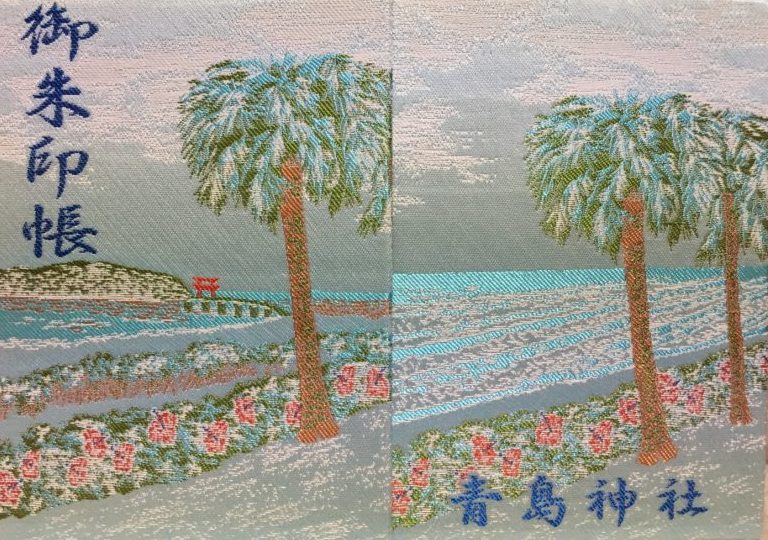
Front and back cover of a goshuincho bought at Aoshima Shrine, Miyazaki
The Anatomy of a Goshuin Stamp
Goshuin stamp designs will differ according to the shrine or temple you go to, as each one has its own style. However, there are some similarities across the board. Here’s a guide to the general set-up of a goshuin stamp:
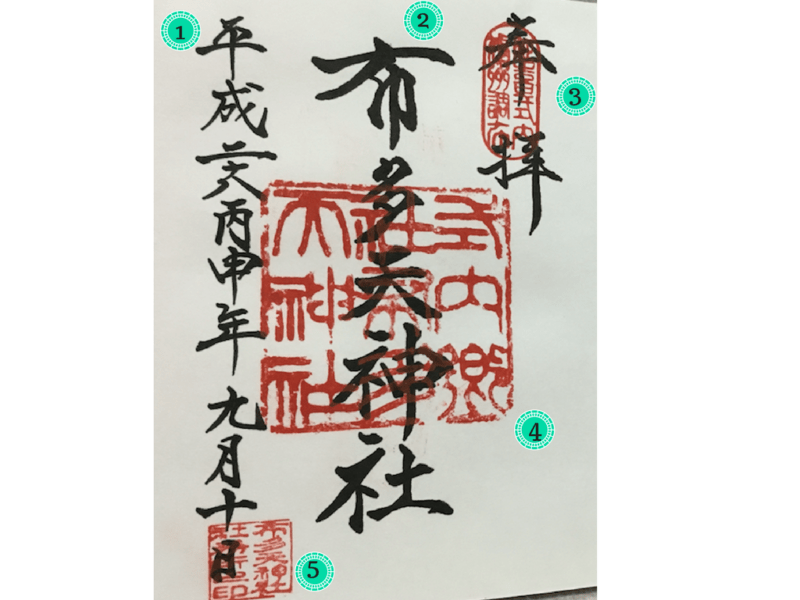
- The date of your visit in year/month/day format. In this case, Heisei 28 September 10. (Sept 10, 2016)
- The name of the shrine or temple you’re visiting, written in calligraphy. Written here: Fudaten Shrine.
- 奉拝 (houhai), which means to worship.
- A stamp with the name of the shrine.
- A second stamp indicating the name of the shrine — not all shrines or temples will have this, while others will have multiple stamps. These may signify the bodhisattva there (in the case of temples), or may be the official emblem of the shrine, or feature some connection with neighboring or related shrines.
Many goshuin pages will look very different from the above example — but that’s part of the fun! Each shrine and temple has their own distinctive design, layout and calligraphy style.
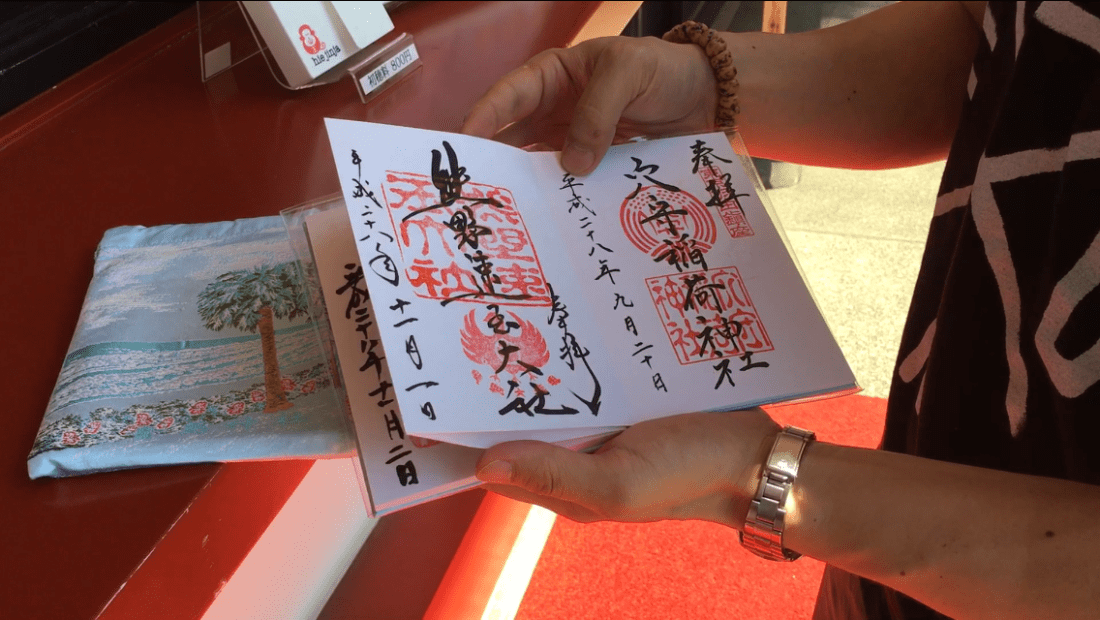
How To Use Your Goshuincho
When you arrive at the shrine or temple, make sure to make a small offering at the saisenbako (money box) and pray first. Since the goshuin stamp is essentially “proof” of pilgrimage to a religious site, it’s considered a faux pas at best and sacrilegious at worst to not at least pay respects at the temple or shrine before getting your souvenir. Also, if visiting a shrine, make sure to follow general etiquette guidelines when you enter shrine grounds.
Once done, head to the goshuin reception desk and hand over your book, preferably opened to the page you want stamped. Depending on the shrine, you will either pay the fee (usually ¥300 but this may vary) before or after the stamp is complete. You will most often be given a number plaque and then asked to wait. A few minutes later your number will be called. Hand over your plaque (and money, if you didn’t pay before) and receive your newly stamped and signed page.
There is no rule indicating temple and shrine stamps must be in separate goshuincho books, but many people like to keep them separate.
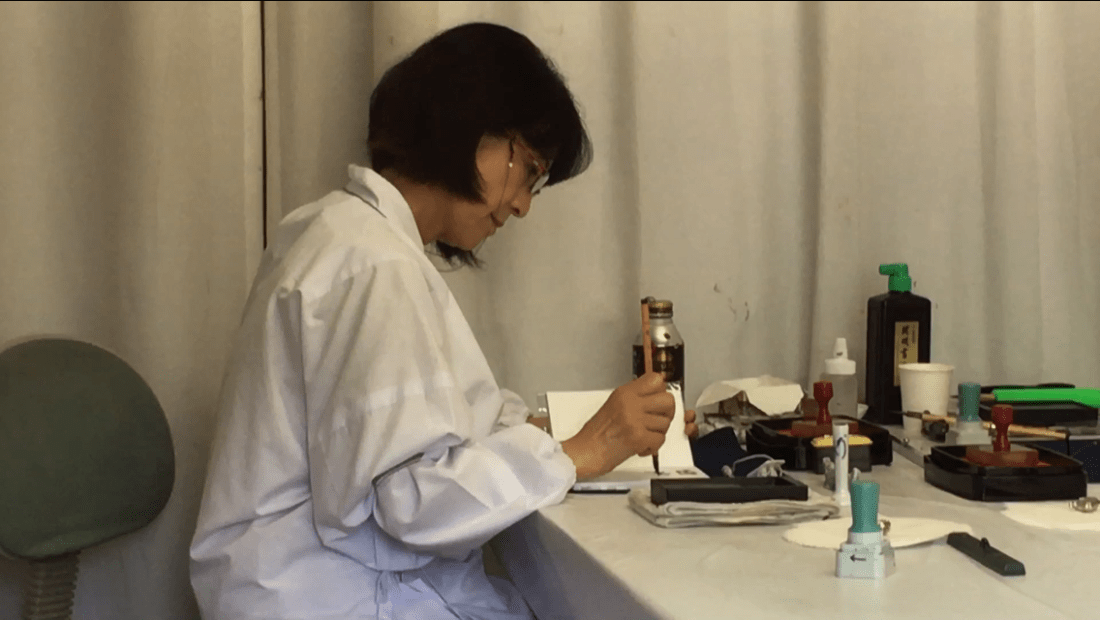
Extra Goshuin Tips
Shundo Ohura of Gosyunibito.com , a website devoted to shrines and goshuincho, offers some tips on what to be mindful of when requesting a goshuin stamp.
- If you have a book, but you forgot to bring it, simply let the attendant know and they will give you your stamp on a separate piece of paper. You can glue this into your book later once you get home. Do not ask them to write into a notebook or scrap paper that you happen to have with you.
- Shrines aren’t as well equipped with change as shops, so when you pay for your stamp try to keep it as close to the ¥300-500 fee as possible. Don’t pay with ¥5,000 or ¥10,000 notes.
- Some shrines and temples do not offer this service at all. Research in advance, or ask once you get there. If they don’t offer it, then you’re out of luck.
- While waiting for your goshuin stamp and calligraphy, wait patiently without talking or texting on your phone, talking loudly or otherwise inconveniencing others around you. Do not eat or drink. (Although you shouldn’t be doing that on temple or shrine grounds anyway .)
Related Posts
- How to Visit Shrines in Japan
- 10 Serene Temples and Shrines in and Around Tokyo
- 5 Must-visit Shrines and Temples in East Kyoto
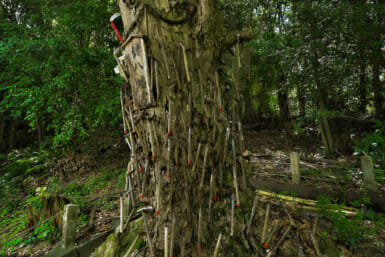
Japan's Scariest Shrine: Kama Hachimangu
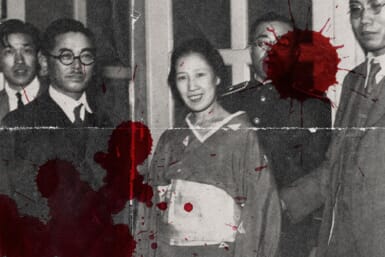
The Disturbing Case of the Killer Geisha Sada Abe | On This Day in Japan
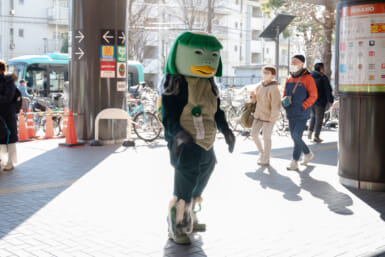
I Tried Being a Mascot for the Day
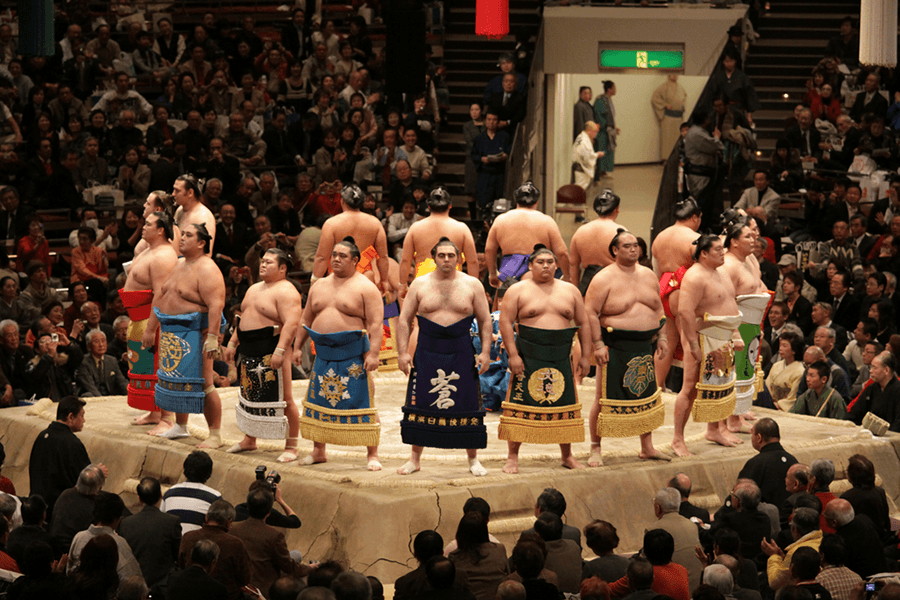
A Guide to Sumo in Tokyo: Rules, How to Get Tickets and More

Tara: A Mystical Oceanside Town Where You Can Feel the Moon’s Power

Super Delivery International: Bringing Japan to Your Door

Stay in Style at DoubleTree by Hilton Kyoto Station

A Culinary Wonderland in Hyogo Prefecture

Eki Stamp Book (Gotta Collect Them All!)
As an Amazon Associate, I earn from qualifying purchases
The Japanese see the value in collections. From anime card collections to the famous Pokémon slogan: “Gotta catch ‘em all!”, the art of collecting runs deep through the culture.
Bearing in mind that Japan has what is quite possibly the most advanced and efficient railway system in the world, it is no surprise that they collect Eki Stamps when traveling the rails.
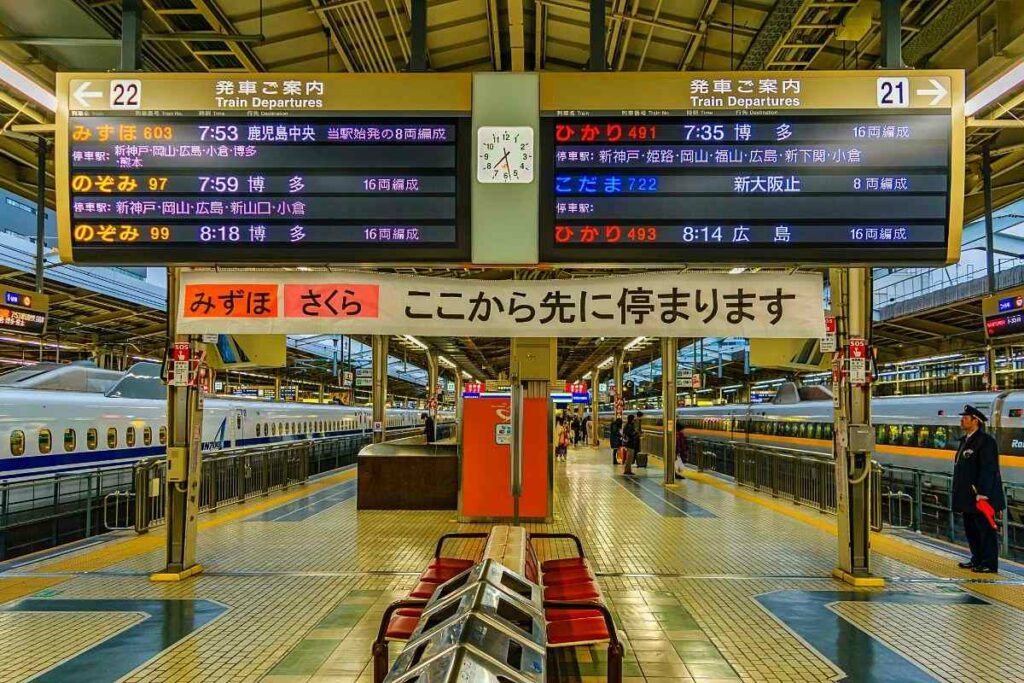
Here, we will detail what Eki Stamps are and how you can join the quest to collect them all!
Table of Contents
What Are Eki Stamps?
Considered to be a fun activity in Japan, Eki Stamps are rubber inked stamps which identify the station to which they belong.
View this post on Instagram A post shared by Sophie Greenwood (@inkandbear)
This is done symbolically with emblems that link directly with local areas. Collecting them, much like collecting stamps on a passport, has become an established Japanese tradition.
People collect them in their masses, in a dedicated Eki Stamp Book that comes in varied styles and sizes.
When Did People Start Collecting Eki Stamps?
Established in 1931, the first stamp appeared at Fukui Station by the West Japan Railway Company.
View this post on Instagram A post shared by Serena Lindeman (@serena_lindeman_millinery)
It has grown in popularity ever since and there are in excess of nine thousand available today, across Japan.
Some stations even design special, limited edition stamps for Christmas and other seasonal periods and local events.
Festivals, for example, are very popular and ubiquitous across the country and some will even be honored with one of these.
Interesting Fact : As you might expect, there have been many Pokémon themed stamps to collect.
Do All Japanese Train Stations Have Eki Stamps?
Some stations are run by independent companies, and you can’t even use a Japanese Rail Pass, so no.
View this post on Instagram A post shared by Joana Azcueta (@jazcueta)
However, the vast majority do have them, especially in major hubs like the capital of Tokyo, the old capital of Kyoto and Osaka, all have their distinctive designs.
How Do You Get an Eki Stamp Book?
This you will have to pay for, and they are sold widely in bookstores across Japan.
View this post on Instagram A post shared by Remi Shimazu | LA & Japan Travel Creator ✨ (@remishimazu)
Usually around fifty pages and a similar size to that of a passport, they come in different sizes and a multitude of differing designs. One will cost you around 650 yen.
You can, alternatively, collect the stamp on just about any piece of paper you like.
Key Fact : A lot of stations will have a stack of paper just in case you don’t have a book.
How Do You Get an Eki Stamp?
Simply ask at any Japanese Railway Station. In the majority of them, you will even find a delightful little stamp station in a corner somewhere.
This consists of both the stamp and ink, placed on a table for self-use. Staff will usually assist you, should you struggle in any way.
View this post on Instagram A post shared by @ennyyangg
Stamp Stations are usually easy to spot and are found in some common areas in a station:
- By Ticket Gates
- In Waiting Areas
…in some, you may need to ask.
Does the Eki Stamp Book Have Blank Pages?
View this post on Instagram A post shared by Angelina (@angelinawanczarskyj)
Rarely. It usually has pages divided into sections for stamp placement, the date, and some notes.
People like to write any personal experiences, thoughts, or feelings around specific stamps. It becomes a small travel journal, essentially.
You may also like
- 8 Japan’s Most Scenic Railway Journeys You Can Take
- Is Train Groping In Japan a Real Problem
- The Luxury Trains of Japan
Eki Stamp Book FAQs
How do i use an eki stamp book in japan.
To use an Eki Stamp Book, visit train stations that offer them. Look for stamp stations usually located near the ticket gates. Purchase an Eki Stamp Book if you don’t have one. At each station, locate the stamp station, use the provided ink pad and stamps to mark your book with the station’s unique stamp design.
Can I collect Eki stamps from different railway companies in the same book?
Yes, you can collect Eki stamps from different railway companies in the same Eki Stamp Book. These books are designed for collecting stamps from various stations across Japan, regardless of the railway company operating them.
Are there special Eki stamps for seasonal events or holidays?
Yes, many train stations offer special Eki stamps during seasonal events or holidays. These stamps often feature limited-time designs that commemorate specific festivals, seasons, or local celebrations. Keep an eye out for announcements from the railway companies about such events.
What are Eki Stamp Books in Japan?
Eki Stamp Books are souvenir notebooks available at many train stations across Japan. Travelers can collect unique station stamps by visiting different train stations and imprinting their books with these stamps. It’s a popular way to document and remember their journey.
How do I start collecting Eki stamps?
To start collecting Eki stamps, first, acquire an Eki Stamp Book. You can usually find them at major train stations or souvenir shops. As you travel, visit different train stations and look for stamp stations. Use the provided stamps and ink pads to mark your book with each station’s distinct stamp.
Which train stations in Japan offer Eki Stamp Books?
Kyuhoji Station 久宝寺駅 Kyuhoji Station: Before exit. Namba Station 難波駅 JR Namba Station: Next to fare adjustment machine (before exit) Nara Station 奈良駅 … Osaka Station 大阪駅 … Shin-Osaka Station 新大阪駅 … Universal City Station ユニバーサルシティ駅 … Saitama Shintoshin Station さいたま新都心駅 … Akihabara Station 秋葉原駅 Plus many more: Examples include stations in Tokyo, Kyoto, Osaka, Hokkaido, and along the Shinkansen lines.
What are some popular Eki Stamp Book routes in Japan?
Some popular Eki Stamp Book routes in Japan include the Yamanote Line in Tokyo, the Kansai region loop line, the JR Hokkaido routes, and scenic routes like the Hakone Tozan Railway. These routes offer a variety of unique station stamps and picturesque views.
How much do Eki Stamp Books cost?
The cost of Eki Stamp Books can vary depending on the design, size, and location. On average, they might range from 1,000 to 2,000 yen. Some books come with a few initial stamps, while others require you to purchase stamps separately at each station.
Final thoughts
Stamp Collecting is quite a widespread phenomenon throughout the world. From mailing stamps to passport stamps, it is considered something fun to do by many.
Eki Stamps, however, are unique to Japan and provide an interesting and visual method of documenting your Japanese journeys.
Should you be fortunate enough to visit Japan and do some traveling by rail, be sure to collect your stamps, even if you can’t collect them all…
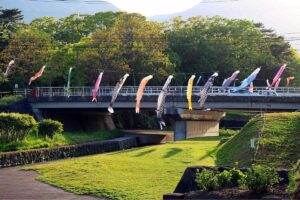
About the author
Darren Arnold
I’m a practicing lecturer of English Language and Literature and a freelance writer; an EdD student and Digital Resource Creator. Since being a child, I’ve been fascinated by Japanese culture and history and love writing about it.
Latest posts

Japanese Wedding Traditions (Venue, Dress & Food)
This post will discuss wedding customs you can expect to find in a traditional Japanese wedding today. These include the traditional Japanese wedding dress code, venue, gift, and food.

Bubble Tea vs Boba Compared: What’s the Difference?
Bubble Tea and Boba are two extremely refreshing drinks with the added satisfaction of jelly balls to add a whole new sensation to the drink.

Rinko Kikuchi Net Worth:Sci-fi blockbuster Japanese Star
Acclaimed actress Rinko Kikuchi and her impressive net worth. From her breakthrough role in ‘Babel’ to starring in blockbuster hits, learn about the financial success that accompanies her illustrious career.

Make planning your Japan trip that little bit easier
Goshuin: How to Collect These Beautiful Stamps on Your Japan Trip
Sharing is caring!
- Latest Posts
- This Tokyo Izakaya Just Got Named One of the Best in the World - 1 May 2024
- How To Get Between Narita and Haneda - 30 April 2024
- How to Get from Haneda Airport to Kyoto - 26 April 2024
Goshuin are hand-drawn designs that you can collect from shrines and temples around Japan – and they make a beautiful souvenir of your trip. But, as with everything in Japan, there’s a little bit of etiquette involved with collecting them – so, here’s what you need to know.

What Are Goshiun?
What do they mean, where to put the designs, how much is a goshuin, the process of collection of a goshuin, some tourist attractions have goshuin too, keeping your goshuin catalogued, how to find the prettiest goshuin.
Originally, goshuin were stamps given to the devout as part of their pilgrimage to a shrine or temple. The monk would draw them to show that someone had worshipped at the shrine – but, while this is still part of collecting a goshuin for many, others collect them for the uniqueness of their designs.
Every temple has a different stamp, which often reflects something about the temple from which you collect it. So, for example, if you go to the rather fabulous Yasaka Koshindo – aka the Pom Pom Temple – in Kyoto, which is presided over by statues of the three wise monkeys, you’ll find the monkeys as part of the design.

The purple design above is from Nagoya’s Wakeoe Shrine which has a fantastic wisteria display – and, I’ll let you work out what’s on the stamp from the Tagata Shrine in Nagoya which has an erm, male anatomy theme! Let’s just say I didn’t think I should add it on here.
A Goshuin design comes in two parts – the red stamped part contains pictures that might reflect something about the shrine, and then, there’s a handpainted element that’s done in black calligraphy script. This might include the name of the temple, the date you visited, and on some of mine it says how long the temple has been or the name of the deity the shrine represents.

Sometimes the shrine will add other elements as well, like the frog above – this design is from Sendai’s Sakuraoka Daijingu Shrine. I still have no idea what the frog has to do with anything, but I rather like him.
Sometimes a temple will have more than one design, especially if it’s around a holiday day or the new year, and you can choose which one you want, but normally you won’t see the design until after it’s been drawn for you.
You might have heard about collecting other sorts of stamps on their Japan trip like those at stations, but, while you can do those in any book, you must collect goshuin in a special book, called a goshuin-cho.
This is not like a normal notepad, instead, the leaves fan out sideways in a long line outside the book, rather than having pages that you flick through. Each stamp is given its own page in the book.
You can use both sides of the pages in a goshuin book if you want to – this will let you collect 46 different goshuin. Or, you can just stick to having your stamps the front of the pages. The shrines will fill all of the front pages first which allows you to decide when you’ve filled this up whether to go onto the back or buy another book.
You can buy these books at shrines and temples and like the stamps, you’ll find lots of different designs.

I bought my first book (the left-hand design) at Zojo-ji temple (one of our interesting shrines in Tokyo ) as that was the first stamp I collected, but then when I was at the Ozaki Shrine in Kyoto, which has a bunny theme, I couldn’t resist buying this second one with a cute bunny design.
A standard stamp is around 300 yen – and you usually need to pay in cash. However, if the shrine does have a special limited edition design, these cost slightly more – normally 500-1000 yen. The more ornate the design the more it costs – especially if gold leaf is involved.
You can fit a lot of goshuin in a book, and collecting them can get a bit addictive. I discovered this is my equivalent of collecting gachapon in regards to it burning through cash – after a particularly busy day visiting some unusual shrines in Nagoya, I looked in my purse and all my money had gone away.
Most shrines and temples won’t take cards to pay for a goshuin so make sure you have cash – and ideally the right change, or a small note.
First of all, remember, that goshuin originally had a spiritual connection, so please collect respectfully. Pay attention to the shrine, use the purification ritual, and pay a small offering at the shrine.
Then you have to find the office in which they are drawn – these might not open the same hours as the shrine, they’re normally open from around 9am to 4pm, but you might find a bit of deviation either way. If you can’t find it, look for a sign like this one.

When you arrive here, you ask for a goshuin, or simply show them your goshuin book.
At this point, they might point at the designs so you can choose which one you like, or they’ll just tell you how much it costs.
You then hand over your book and, depending on how big and busy the shrine is, either the monk will draw it in front of you, or, it will go off to someone in another room or at another window. Just wait around until it’s finished. They know which book belongs to whom.
If the shrine is very busy or famous for its goshuin you might even get a numbered ticket and have to come back a bit later.

If you do get to see the monk drawing the goshuin do not take pictures without asking them – some of them will have a clear no photos sign, others might say no when you ask, but you might get lucky.
I had one very smiley monk who was happy for me to take pictures at one Kyoto shrine. Again, the busier and more popular the shrine the less likely they are to let you take pictures.
While most of the time you’ll be collecting goshuin you’ll be doing it from official shrines or temples, you’ll also find some tourist attractions that have small shrines on the premises that also have them.

For example, there is a small shrine on top of Tokyo Tower and you can buy goshuin sheets in the gift shop. And, if you go to visit Tama, the Cat Stationmaster, you’ll be able to buy a goshuin from the small shrine on the platform in her honor. It has a cute paw print on it.
As I said, collecting goshuin is not the same as collecting the stamps on a stamp pad that you find at tourist attractions and stations – these must not go in your goshuin-cho. Just use a second normal notepad for those stamps – or, you can buy special stamp books at Japanese stationary stores. Only goshuin go in a goshuin-cho.
Another ‘rule’ to abide by is that while collecting goshuin is fun and the book makes a lovely souvenir for you, you can’t give them as gifts – the seal is for the person who collects it so, don’t pick up lots of bits of paper for friends back home.
In very small shrines – for example, Kyoto’s fantastic Daruma Shrine, they don’t have anyone on hand to draw the goshuin but they will give you a ready-drawn sheet that you can then add to your book. Top tip if you get these – photograph the seal and the shrine you go it in so you can match them up later.
If you forget (ahem, been there, done that), some of the shrines will give you a piece of paper about the shrine with the goshuin so keep everything together – or, if the design doesn’t help you pinpoint things, the camera function on Google Translate can sometimes read enough of them for you to work out it by say, the date.
That’s how I worked out where the one above with the little frog on it came from. I had no clue where I’d got that until ran Google Translate over it – again, still confused by the frog!

Goshuin should go in date order, so, keep the paper seals in your book while you collect them – it’s safer than putting them in your bag anyway as they will get creased. This should also hold a place for them if the next shrine draws their stamp.
At the end of the day, you can either glue them in there and then (7-11 sells glue) or take out the papers and put them somewhere safe, then add them when you get home which is when that photography tip comes in very handy.

Also, remember, that the book is the opposite way to how we would read it in the West. So, when you open the book, your first stamp is on the left-hand page and the book cover is on your right and you pull the book to the right to open it in order.
I always open mine the other way at first and then panic that some of them are upside down. Make sure yours is the right way up before you stick any extra sheets in place.
Goshuin collecting is now incredibly popular with young women in Japan and, you can follow hashtags like #goshuin #goshiongirl, or in Japanese #御朱印 which will show you some of the prettiest designs.
As a general rule, I found that if the temple had something a bit quirky about it, the goshuin also tended to be a bit more interesting.
Some of my other favorite ones below…
Inu Shrine, Nagoya
This shrine is dedicated to all the furry good boys of the world and has a dog motif – who also appears on their goshuin. Because I got this one in 2023 it also has rabbits on it as 2023 was the year of the rabbit. You’ll quite often find the year’s symbol reflected in some of the special goshuin.
Nagoya has some great unusual shrines and is one reason why I think you should stay a bit longer in Nagoya than most people allow for the city. I did not spend enough t ime there.

Ohatsu Tenjin Shrine, Osaka
I love the flower theme of the goshuin of the Ohatsu Tenjin love shrine in Osaka. This also includes an image of the ill-fated lovers the shrine is dedicated to (read their story in our guide to spending three days in Osaka ).

Otoyo Shrine, Kyoto
And here is another cute one that comes from the Otoyo Shrine in Kyoto. This shrine is dedicated to all animals and the entrance is guarded by two mice – who also appear on their goshuin.

So, that’s what you need to know about collecting goshuin on your trip. It can be a great way to add a bit of extra interest (and fun) to visiting temple-heavy cities like Kyoto – especially if someone in your group easily gets shrine fatigue (which I admit is one reason I started to collect them), or to keep children motivated – but, be warned it is a bit addictive once you get started.
If you start collecting them, please come over to our Facebook Group to share your pictures.

Who Writes This Blog?
My name is Helen Foster, and I’m a journalist and author. My travel articles have appeared in publications including The Australian, RAC Horizons, Jetstar Magazine, Sainsbury’s Magazine, and more.
I’ve traveled to Japan five times before- solo and with my partner – and I’ve just returned from trip six in June 2023. So, everything here is pretty up to date.

Immerse Yourself in Art and History: Unveiling Tokyo's Museum at the Imperial Palace - Treasures of the Imperial Family at Sannomaru Shozokan
We use cookies to improve our contents. Check the detail and update your settings here .
We use cookies to improve our services.
For more details, please click here .

- Food & Drink
- Accommodation
- Things To Do
- All the categories
Transportation
- Weather & Seasons
- Long-Term Stay
- Travel Tips
- Event Tickets
- About MATCHA
- Company Profile
- MATCHA Special Features
Guide to Collecting Shrine and Temple Stamps and Top 5 Stunning Goshuin

Japanese shrines and temples offer visitors goshuin stamps that serve as beautiful keepsakes. Many people have even begun collecting them due to their colorful designs. Our writer is also a collector and has amassed ten stamp books. This article introduces the etiquette for collecting goshuin.
What Are Goshuin Stamps?

A goshuin is a red stamp that certifies a visit to a shrine or temple . It's also a symbol of one's relationship with deities. Historically, visitors had to copy a sutra by hand and dedicate it to the temple to obtain a stamp. Fortunately, visitors today can receive the stamps in exchange for a small fee.
The general price ranges from 300 to 500 yen. Limited edition goshuin stamps cost between 500 to 1,000 yen.
The Evolution of Goshuin

The limited edition Chrysanthemum Festival stamp from Kasama Inari Jinja (Kasama City, Ibaraki Prefecture)
Back in the day, goshuin consisted of only a stamp and either the shrine or temple's name written with a brush. Today, they have evolved into colorful creations with artistic designs. Some of them even include adorable or beautiful illustrations.
It's no surprise that many people from all over the world have started collecting goshuin stamps.
Guidelines for Collecting Goshuincho Books

A goshuincho (stamp book) can be purchased at major shrines, temples, and bookstores. Prices range from 1,000 to 2,000 yen.

The goshuincho of Chusonji Temple (left/large size) and Ise Grand Shrine (right/small size)
A large book is 18 x 12 centimeters, while a smaller size is 16 x 11 centimeters. Our MATCHA editor uses a larger size goshuincho, since it's easier to sign and fits larger stamps.
After selecting a stamp book of your own, you can start your collection!
Should You Sort Stamps According to Temples and Shrines?
Some people believe that the stamps of shrines and temples should not be mixed in one book . This policy may be due to an ordinance dating back to the Meiji Period (1868-1912) that completely separated Shinto from Buddhism.
Some shrines or temples may decline signing a book with mixed stamps. However, this is quite rare, so visitors should not be worried. Our writer personally uses two books, one for each religion, since it's easier to sort and organize the stamps.
General Etiquette
Please note that there are a few basics manners that must be observed.
When obtaining a goshuin, go to the shrine or temple office, which is typically labled "goshuin-sho" or "nokyo-sho."
How to Read a Goshuin Stamp

The goshuin of Nakayama-dera Temple (Takarazuka City, Hyogo Prefecture/left) and Akama-jingu Shrine (Shimonoseki City, Yamaguchi Prefecture/right)
While the positioning of the red stamp varies at each shrine or temple, the general layout and definitions are as follows:
Top Five Unique Stamps
Our writer has amassed a stunning goshuin collection of around ten books. The following are five unique stamps that he recommends snagging!

Japan Rail Passes and Ticket Deals: Types, Prices, and Features
1. Meiji Jingu Shrine

May 1, 2019, marked the start of the Reiwa Era in Japan. To commemorate this historic day, many people lined up at Meiji Jingu Shrine to obtain a goshuin.

Meiji Jingu
2. Sakura Jingu Shrine

Sakura Jingu in Tokyo's Setagaya Ward offers a limited edited goshuin when the two Kawazuzakura cherry trees in front of the main shrine bloom.

Sakura Jingu Shrine
3. Seikoin Temple

The "hebi-ishi" (serpentine stone) is said to bring good luck with money. This mysterious stone is enshrined at Seikoin Temple in Higashiizu, Shizuoka Prefecture. The chief priest reportedly has a pet white snake, which is believed to embody the sea goddess Benzaiten.
4. Musashino Reiwa Shrine

This goshuin was obtained at Musashino Reiwa Shrine , which was named after the new Imperial era. It is located next to the Kadokawa Culture Museum , a new landmark in Saitama Prefecture.

Musashinosuwareiwa Shrine
5. Homangu Kamado Shrine

This shrine is a ten-minute drive from Dazaifu Tenmangu in Kyushu, and has garnered popularity due to the anime "Demon Slayer: Kimetsu no Yaiba."

Homangu Shrine Kamado Shrine Shimomiya
Do all shrines have goshuin?
While goshuin are commonly available at many shrines and temples throughout Japan, not every single shrine or temple may offer them. Some smaller or less visited shrines and temples may not have a designated goshuin office or may not participate in this practice. However, popular and well-known shrines and temples often provide goshuin services as part of the cultural and spiritual experience for visitors.If obtaining a goshuin is a specific part of your visit that you wish to experience, it is advisable to research in advance to identify which shrines and temples offer goshuin and to familiarize yourself with the proper etiquette and procedures involved in receiving them during your visit.
What is a goshuin book?
A goshuin book, or "goshuinchō" in Japanese, is a special notebook used to collect unique seals or stamps called goshuin from shrines and temples in Japan. These seals, created by monks or shrine priests, contain the site's name, visit date, and sometimes prayers. The book serves as a personal record of spiritual journeys and is a treasured keepsake, symbolizing reverence for Japanese culture and the significance of visited sacred places. Collecting goshuin in a goshuin book is a popular practice that deepens connections to the spiritual essence of these sites.
Is goshuin Buddhist or Shinto?
Goshuin are traditionally associated with Buddhist temples in Japan rather than Shinto shrines. These specially inscribed seals or stamps, obtained by worshippers and visitors at temples, are a significant part of the Buddhist cultural heritage in Japan. Goshuin are typically received as a form of blessing or symbol of a pilgrim's spiritual journey, reflecting the connection between the individual and the temple's practices. While goshuin are not typically associated with Shinto practices, Shinto shrines may have their own unique forms of calligraphic seals or stamps, such as "shuin." Shuin from Shinto shrines serve a similar purpose in that they provide a commemorative mark of a visitor's pilgrimage or visit to the shrine and often carry blessings or good wishes.
What are the stamps at temples in Japan?
The stamps at temples in Japan are called goshuin. These stamps are unique and specially inscribed seals or stamps that worshippers and visitors can collect as souvenirs or keepsakes of their visit to a shrine or temple. Goshuin are typically created by monks or shrine priests using calligraphy brushes and ink. Each goshuin entry includes the name of the shrine or temple, the date of the visit, and sometimes a prayer or blessing. Collecting goshuin stamps is a popular and culturally significant practice in Japan, allowing visitors to create a personal record of their spiritual journey and experiences at various religious sites. These stamps serve as tangible reminders of reverence for Japanese traditions, spiritual connections, and the cultural richness found at shrines and temples throughout the country.
Is there a stamp at Sensoji Temple?
Yes, Sensoji Temple in Asakusa, Tokyo, is a popular and iconic temple where visitors can obtain goshuin, the specially inscribed seals or stamps that are traditional souvenirs from shrines and temples in Japan. When you visit Sensoji Temple, you can typically receive a goshuin stamp at the temple's stamp office or designated location within the temple complex.
A Connection with Japanese Culture
While reasons for collecting goshuin vary among visitors, a common thread is forging a connection with traditional Japanese culture. By starting your own stamp collection, you'll create connections with shrines and temples while making special memories.

Related topics
Top articles, related article.

See Magical Cherry Blossoms at Night! Top 12 Light-up Events in 2024
Nature / Seasons

Cherry Blossoms in Eastern Japan: 7 Splendid Spots in 2024

Fukuoka: Top 8 Fall Foliage Spots in 2024

Dreamlike Museums and Exhibitions! A Fun-Filled Day Trip to Tokorozawa

Explore Anime and Pop-Culture Spots With the SEIBU 1-Day Pass

Fukuoka: Enjoy An Art Tour Of Dazaifu Aboard A Sightseeing Train

Top 8 Shrines in Japan to Welcome the New Year!
Traditional Culture
Start planning your trip
Special Features

Popular Searches
Latest news.

Mishima Skywalk Hydrangea Festival 2024: Mt. Fuji Views and Vibrant Blooms

Floral Desserts in Kyoto! Itoh Kyuemon's Uji Matcha and Hydrangea Festival

Discover Kyoto's Elegant Geisha Culture at the Gion Kagai Art Museum

Showa Kinen Park Flower Festival 2024: Enjoy Nemophila, Tulips, and More!

A Must for Nature Lovers! Win a Free Stay at Unzen Amakusa National Park

Japan's Public Holidays and Long Weekends in 2024

Aeon Mall Okinawa Rycom: A Shopping Mall Featuring a Resort Aura

Suica and Pasmo IC Cards: Prepaid Transportation Passes in Japan

Riding Taxis in Japan: The 6 Best Apps to Grab a Cab


How to Travel to Kyoto From Osaka: The Fastest and Cheapest Ways
New articles.

Directly connected to the Shinkansen station! Hotel Associa Shin-Yokohama is convenient for sightseeing in Tokyo and Yokohama

Visit Gaiaflow Shizuoka Distillery to taste rare Japanese whiskey

[To be held in autumn 2024] Let's go see the Takayama Festival (Hachiman Festival), one of the three most beautiful festivals in Japan (Hotel Associa Takayama Resort)

Introducing Space Beppu's Own-brand Items

Co-working and community space for digital nomads "S-TOKYO"
- Tours & Experiences
- Tailor-made Trips
- Bahasa Indonesia
We are happy to see you again!
Continue with
Or use email.
No Account? Create one
Create account
Already have an account? Sign in
Quickly Sign up with
I agree to Japan Travel's Terms of Service and Privacy Policy . Terms of--> and acknowledge that Japan Travel's Privacy--> applies to me.-->
Email reset password link
Please check your inbox and click the link we will send to you.
Goshuin: The Perfect Traditional Souvenir From Japanese Shrines and Temples
There’s another way to immortalize your visits to beautiful Japanese shrines and temples

Harajuku’s Meiji Jingu Shrine, Asakusa’s Senso-ji, and Kyoto’s Kiyomizu-dera, Kinkaku-ji and Fushimi Inari Taisha Shrine—these are some of Japan’s most iconic shrines and temples that are visited by tens of thousands of locals and tourists alike every year. Visitors tend to use a few typical methods to encapsulate their visits: taking photographs, buying omamori (amulets), uploading multimedia onto social media, or buying omiage (souvenirs). But there’s another way to immortalize your visits to these beautiful fixtures of Japanese culture— goshuin (seal stamps).
What is Goshuin?
Literally translated to ‘honorable red seal’, goshuin (御朱印) is a red stamp that can be obtained from Shinto shrines or Buddhist Temples in Japan.
Dating back as early as around 1300 years ago, the practice of goshuin is thought to have originated as proof of one’s devotion. Pilgrims would handwrite shakyo (Buddhist sutras) and dedicate them to Buddhist temples, and in exchange, receive a goshuin from the temple’s nuns and monks.
In modern times, the practice of collecting goshuin has changed slightly. Rather than copying and devoting sutras, visitors can pay a fee (usually ranging from ¥300 to ¥1000) or make a donation to a temple or shrine to receive a goshuin. Members of the younger generation have also been taking up collecting unique goshuin as a hobby, with many taking to social media to show off cute, seasonal or remarkably aesthetic goshuin from rarely-visited temples and shrines.
Then… what’s a Goshuincho?
Most goshuin are stamped on the pages of a book. These books, officially known as goshuincho (御朱印帳), serve as a kind of record or proof of faith. It houses evidence of one’s pilgrimages to various shrines and temples during their lifetime. These books are still used by goshuin collectors today, though they probably hold less spiritual significance to their users.
Goshuincho can be bought at shrines or temples directly, or at normal bookstores. If you decide to buy them at shrines or temples, you’ll find the kanji for goshuincho written on the front, while the name of the shrine or temple is written on the back, also in kanji. For example, the goshuincho pictured below is from Osaka’s Mizuma-dera, and the temple’s famous scenic spots are ornately embroidered onto the goshuincho’s cover.
Goshuincho that aren’t sold at shrines or temples tend to have covers that are either of the following three types: plain ones with simple print, extremely elaborately-designed ones, sometimes with hand-carved wooden covers, or unique, limited-time ones with funkier designs. For example, the below goshuincho was modeled after Utagawa Hiroshige’s adorable cat artwork.
Goshuincho typically come in two sizes: 18cm by 12cm, or 16cm by 11cm. They’re specifically made in these sizes to ensure that all temples or shrines’ goshuin can fit on the pages. The books are typically priced anywhere between ¥1500 to ¥3000, although those with extremely detailed designs are, as you might expect, much more expensive.
Let’s get your Goshuincho stamped!
You’ve got your goshuincho, now let’s go get it stamped! Once you’ve walked into the temple or shrine, look for the reception area. This is typically where you’ll see keychains, omamori and other services being sold. Near or in that building, you’ll find one of the following signs written in kanji: Goshuinjo (御朱印所), Shuinjo (朱印所), or Noukyoujo (納経所) at temples, and Goshuinjo (御朱印所), Juyojo (授与所), or Shamusho (社務所) at shrines.
If you can’t seem to see any of these signs, simply approach any of the temple or shrine staff and ask, ‘Goshuinjo wa doko desu ka? 御朱印所はどこですか?’–where is the goshuin-stamping location?–and they will direct you there.
Once you’ve found it, hand over your goshuincho, opened to an empty page, as well as the stamping fee (in cash) to the kannushi (servant of God) on shift, and they’ll get right to work on stamping the page and calligraphing in black ink. Depending on the temple or shrine, you may be able to choose from an array of designs: if that’s the case, simply point at the one you want.
During festivals and seasonal events, some shrines and temples prepare special goshuin in advance and hand them out as sheets of paper to visitors. You can glue these directly onto your goshuincho on your own. This was especially common at the height of COVID-19 as well, to prevent unnecessary cross-contamination.
At extremely popular shrines or temples or if the goshuin queue gets too long, shrine or temple staff may request you to leave your goshuincho with them while you stroll around the temple or shrine grounds. After a while, you can return to collect your goshuincho and pay the stamping fee. This is to prevent a long line from building up, and to ensure that visitors don’t get too bored standing around and waiting for their turn.
Rules to observe as you fill up your Goshuincho
Take note though, that there are a couple of easy rules to follow as you embark on your goshuin-collection journey.
1. Don’t give your goshuin or goshuincho away
As aforementioned, goshuin are believed to be blessings from God. Giving them away, especially giving a compiled book of goshuin away, is equivalent to actively and consciously giving away God’s blessing to you. This is seen as extremely rude and ungrateful behavior.
2. Don’t use your goshuincho for things other than collecting goshuin
Goshuincho are only meant to be used to collect goshuin. They should not be used as journals, diaries, or seen as normal notebooks.
3. Pay your respects at the temple or shrine before collecting a goshuin
The primary purpose of visiting a shrine or temple is to appreciate its deity, landscape, and architecture, not to collect goshuin.
4. Wait quietly and in an orderly manner when queueing for your goshuin
Remember that a shrine or temple is a place of worship. Even if the queue is long, remain respectful and aware of the atmosphere at such spiritual locations.
5. Do not take photographs of the kannushi unless explicit permission is given
Kannushi are not objects or exhibitions to marvel at; they are servants of God that are assigned to a job that they take pride in. If you would like to take a photograph or video of the calligraphy process, request for their permission first. Only proceed if their express approval is given.
6. Do not request designs from the kannushi
Each shrine or temple has their own unique designs for specific reasons. Even if a temple or shrine no longer offers a goshuin design that they had previously offered, it is rude to ask them to modify their current design for your own sake. Also, every kannushi’s calligraphy is different–even if you do not find that their handwriting fits your ‘aesthetic’, it is disrespectful to ask them to rewrite the goshuin until you are satisfied.
7. Take note that some shrines will not stamp a goshuincho that contains goshuin from temples, and vice versa
Some shrines and temples are stricter than others, and will not stamp your goshuincho if it contains a mixture of goshuin from shrines and temples. A sure-fire method to prevent your goshuincho from getting rejected is to have two separate goshuincho: one for temples, and one for shrines.
8. Prepare exact change, in cash, for the stamping fee
Most shrines and temples in Japan only accept cash. To prevent holding up the queue, it is recommended that you prepare the exact stamping fee, in cash, well before you reach the front of the queue.
Understanding Goshuin seals
Now you’ve finally got your first goshuin but… you’re not sure how to make heads or tails of it. Let’s run through the basic structure of a typical goshuin, using this example from Fukuoka’s Kushida-jinja .
1. Largest red stamp, placed in the center of the page
The largest red stamp contains the name of the shrine or temple. In this case, the kanji ‘櫛田神社’ is stamped, which translates to Kushida-jinja, the name of the shrine.
2. Smaller red stamp(s)
The smaller red stamp(s) symbolize the shrine or temple’s deity. In the photo above, the three hexagons represent Hakata’s three patron Gods, Amaterasu Omikami, Ohatanushi no Omikami, and Susano no Omikami, that the Kushida-jinja is dedicated to.
3. Main calligraphy in the center of the page
A. largest calligraphy.
The largest calligraphy writes out the name of the shrine or temple in Kanji, in this case ‘櫛田神社’ for Kushida-jinja.
b. Smaller calligraphy written to the sides of the largest calligraphy
In some cases, shrine or temple names may be longer than three to six characters. In this case, the kanji is split up, with the ‘main’ shrine or temple name written in a larger calligraphy, while the trailing or following kanji are written in a smaller size to either sides (or sometimes both) of the larger calligraphy. In the above example, the full name of the temple is ‘博多総鎮守櫛田神社’ (Hakata Souchinju Kushida-jinja) so ‘博多総鎮守’ (Hakata Souchinju) is written on the right side of the larger calligraphy.
4. Calligraphy to the left side of the page
This kanji represents the date of your visit to the shrine or temple. The format used is year xx of the xx era, xx month, xx day (xx xx年、xx月、xx日). In the photo above, 平成二十五年、七月、三十一日 is written, which translates to July 31st of year 25 of the Heisei era, i.e. 31 July 2013.
5. Calligraphy to the right side of the page
To the right you'll find the words ‘崇拝’ (すうはい, suuhai ), ‘奉拝’ (ほうはい, houhai ), ‘参拝’ (さんぱい, sanpai ) or ‘遥拝’ (ようはい, youhai ), meaning worship, adore, revere, etc.
We hope this guide has given you the inspiration and courage to start collecting goshuin! Though it’s still seen as an activity most commonly carried out by Japanese people, we believe that collecting goshuin can be fun and meaningful to tourists and travelers alike.
And if you’ve already started collecting goshuin and want to visit lesser-known shrines and temples and collect more unique goshuin, check out one of our community writer’s guide to pilgrimages .
Happy goshuin collecting!
- Share on Facebook
- Share on Twitter
- Copy link to share
Community writer

Top Articles
- Recommended

Cafe Gallery Doka Doka in Onna

Experience the Sansha Taisai Festival!

The Bridge of Dreams

A Tale of Two Temples

SpongeBob Cafe “CAFE Secret Recipe” is Opening for a Limited Time in Shibuya

Two New Demon Slayer Attractions Are Opening at Universal Studios Japan

Anime Museums in Tokyo

Cicada Sake and Teahouse

Guide to Golden Week

A Quaint Ride on the Nagaragawa Railway

Guide to Bringing Medicines Into Japan

Your Name: Real-Life Locations in Tokyo

Sanja Matsuri

Hachiko Statue in Shibuya

Shibuya Crossing

Gion Matsuri

Japanese Urban Legends

Daikoku Car Meet

Iwatayama Monkey Park

Guide to Suica Cards
More from this category, guide to bringing medicines into...
By Japan Travel
Your Name: Real-Life Locations..
By Jianne Soriano
By Kylie Plester

Money in Japan
By Tom Roseveare
Join the discussion

Let us know how we can help.
Help us improve JapanTravel.com
We welcome any suggestions regarding this content. Your feedback is confidential and will be used to help improve this page.
Suggest an edit
https://en.japantravel.com/guide/goshuin-the-perfect-traditional-souvenir-from-japanese-shrines-and-temples/69653
Thank you for your support!
Your feedback has been sent.
Select your language
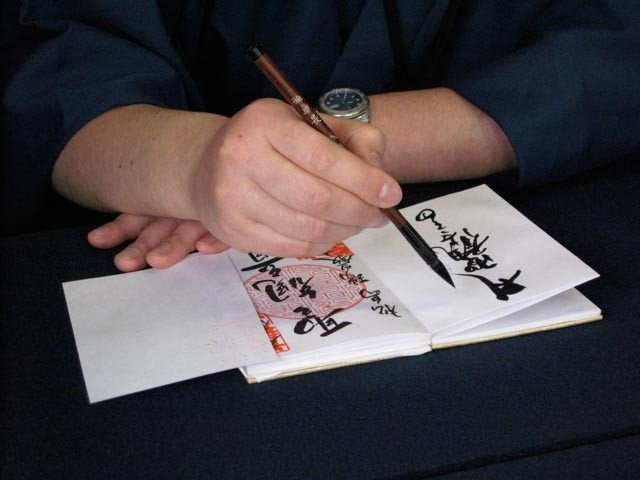
The Japan Temple Stamp Book
The goshuinchou: unique and original gift from japan.
Here is a souvenir idea from Japan that is not plastic sushi or a Hello Kitty rice cooker. The Japanese temple red-stamp notebook is a small book that you can bring to the thousands of shrines and temples around Japan. It is called the "Goshuinchou". Its literal translation is the "Honorable red-stamp notebook". With a name like that, it actually makes stamp collecting sound awesome.
Here is how it works;
Upon your first visit to a temple in Japan, you can buy a Goshuin notebook. You then hand your new book to the friendly monk at the temple. The monk uses black ink to hand-write the name and date using traditional Japanese calligraphy. Afterwards he stamps your book with a large red stamp that is unique to that specific temple. You pay (donate) a few dollars to the temple (usually ¥200-¥500) and then you’re given back the notebook with its beautiful black calligraphy and vermilion red ink. At the next temple you don’t buy a new book, you give them the one that you already have. The monk at the new temple will place his artwork directly next to the ones that you have already received. By the end of your trip you have this collection of original artwork that literally traces your journey through Japan.
Everyone’s notebook ends up being different. Aside from the names and dates being distinct, each monk and temple has a different style. The order in which you go to various temples also makes all the books look different. The best part is that the book unfolds like an accordion. Meaning it opens up like a folded scroll so that all the pages can be revealed at one time (see photo below). I have talked to people who have actually framed the panoramic calligraphy to put on their walls.
Traveling and Stamps
Once you develop the affinity for bringing your Goshuin notebook with you every time you travel in Japan, you begin to develop a keen eye for finding red stamps. You'll start to notice stamps everywhere you go, in train stations and highway rest areas. Even places like the Tokyo Gyoza Museum and the Nagoya Aquarium. In Japan, stamps and travel go together like sushi and soy sauce. It's not just a marketing ploy; Stamps and traveling are deeply rooted in the history and culture of Japan.
Its origins lie in Japan’s history of going on pilgrimages to sacred and holy sites. These may be sacred natural destinations like Mt. Fuji and Mt. Koya. Or they may be early single-site holy places like Ise Shrine. This developed into "multi-site circuits”, like the 88 Holy sites of Shikoku and the 33 sites of Saigoku, where a group of temples are all devoted to the same thing. Since no one temple is more important than the other, all of them must be visited.
Even back as far as 750 AD, the Japanese were trying to keep track of what temples they had been to. Thus, the original motivation for the temple notebook. It is said that back in the old days, the temple priest would sign your book to show that you had been there. If he was away, you would have to "settle” for the stamp. Stamps and signatures became more elaborate as time went on, and they developed into what you see today.
At some of the larger temples, don't be surprised if you hand them your notebook and they give you a “number”. They are so busy, and have so many notebooks, that you’ll have to pick it up on your way out. It’s like a Goshuin coat check.
The larger temples also have upped the ante by offering a unique and more expensive notebook. Some of them are beautifully embroidered with an image of the temple on the outside. My personal favorite being the very rare notebook you can purchase in Koya-san; where the notebook covers are made from the wood of the sacred Kii Mountain Range and Koya forest where the temple resides.
I’m not trying to talk you out of getting plastic sushi or any Hello Kitty related merchandise. I’m just saying, in addition to your other “cool” souvenirs, make sure you pick up and carry around the Goshuinchou temple stamp book. It makes an excellent inexpensive keepsake that gets more beautiful over time.

Richard Mulvihill @richard.mulvihill
I'm a Writer, Comedian, Graphic Designer, who loves Japan, its language, culture and history. In Japan I have lived and worked as an English Teacher, and have traveled throughout Japan for the last 15 years. I still cant get enough of it. I have a blog (japantravelcafe.com) where I talk about ...

Information

Map ( Directions )
Explore nearby

Kawasaki Daishi: A Beautiful and Famous Temple in Kawasaki
By Larry Knipfing
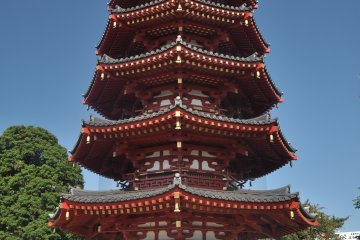
Kawasaki Daishi Temple and Garden
By Kenny King Hin Choi

Kawasaki-taishi Festival
By Anonymous

Kawasaki Horse Track
By Tomoko Kamishima
Top Articles
- Recommended

The Bridge of Dreams

Cicada Sake and Teahouse

Experience the Sansha Taisai Festival!

A Quaint Ride on the Nagaragawa Railway

SpongeBob Cafe “CAFE Secret Recipe” is Opening for a Limited Time in Shibuya

Hoshinoya Okinawa in Yomitan

Cafe Gallery Doka Doka in Onna

Yagiya Soba in Nanjo City

Two New Demon Slayer Attractions Are Opening at Universal Studios Japan

YohaS Night Art Festival at Chiba Park 2024

Daikoku Car Meet

Black Eggs of Owakudani, Hakone
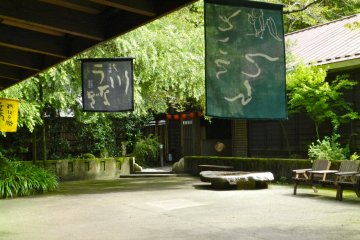
Tenzan Onsen
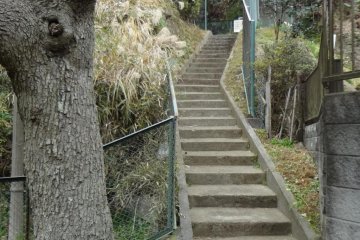
Kamakura's Daibutsu Hiking Trail

Mt. Oyama - Great Day Hike
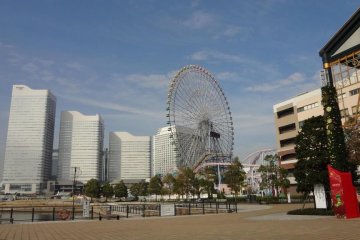
Cosmo Clock 21 Ferris Wheel
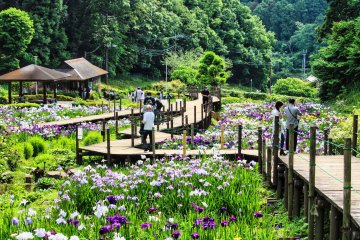
The Town of Ninomiya

Manyo Club in Yokohama
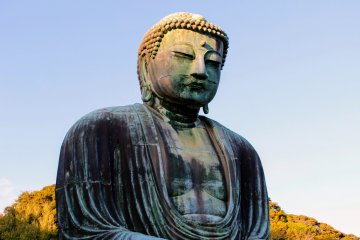
Meeting the Kamakura Daibutsu

World's Shortest Escalator
More from this category.
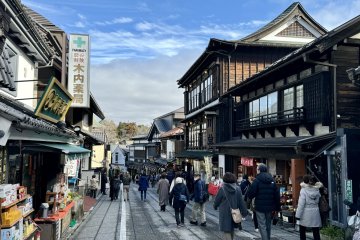
Narita City: More Than Just the Airport
By Veronica Carnevale

2024 Grand Sumo Tournaments

By Sébastien Duval
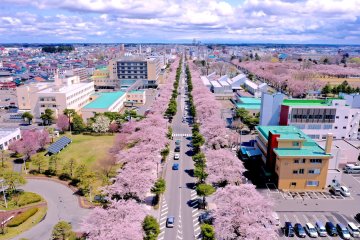
Towada City Spring Festival 2025
- Itineraries
- Tours and Activities
- Travel Guides
- Best of Japan
JRailPass.com » Japan Travel Blog » Collecting Eki Stamps: A Fun Japanese Railway Quest
Collecting Eki Stamps: A Fun Japanese Railway Quest
August 1, 2023
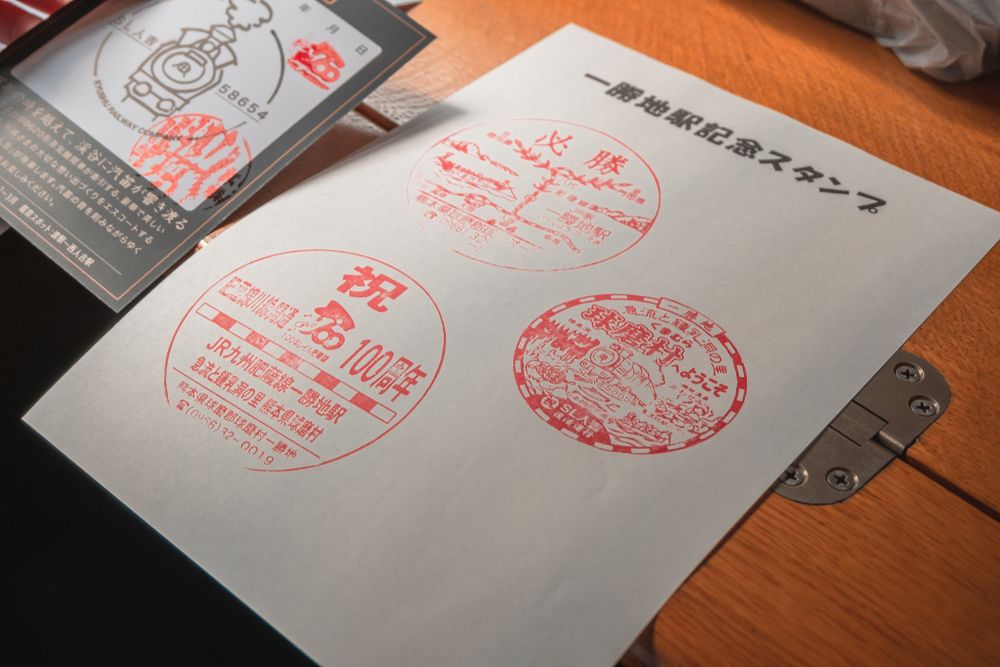
Imagine embarking on a journey across Japan with your Japan Rail Pass , not just to explore the diverse landscapes and rich culture, but to uncover a unique tradition: collecting eki train stamps.
This custom offers a special way to document your travels and engage with the Japanese railway system. Below, we delve into everything you need to know about this fun pastime.
What are the stamps at Japanese train stations?
Eki stamps, found at train stations across Japan, are not mere imprints on paper. These stamps are beautifully designed and unique to each station . They often offer a snapshot of the locale’s character or key landmarks.
Eki stamps were first introduced in 1931 at Fukui train station. The aim was to encourage local tourism, particularly among young people, but has since spread to a widespread tradition.
Collecting Japan train stamps has become a quest to gather as many unique ‘signatures’ from different stations. Although, because, there are over 9,000 train stations across Japan, this is quite an endeavor!
Some locations also release limited edition and seasonal stamps at different times of the year. What’s more, JR East holds an annual Pokémon-themed -stamp rally in July/August. There are 6 special Pokémon stamps available, and you get a prize if you catch ’em all!
Book your Japan Rail Pass now
How to get train stamps in Japan?
Getting eki stamps is easy and fun. Most train stations in Japan , particulaly JR (Japan Rail) stations, have stamp stations—usually near the ticket gates , station master’s office, or waiting areas.
You’ll find a desk or counter with a stamp pad and the station’s unique stamp. Just open your eki stamp book, press it on the inked pad, and you’ve got yourself a memento of your visit.
If you have difficulty finding the stamp station, don’t hesitate to ask the friendly station staff for assistance.
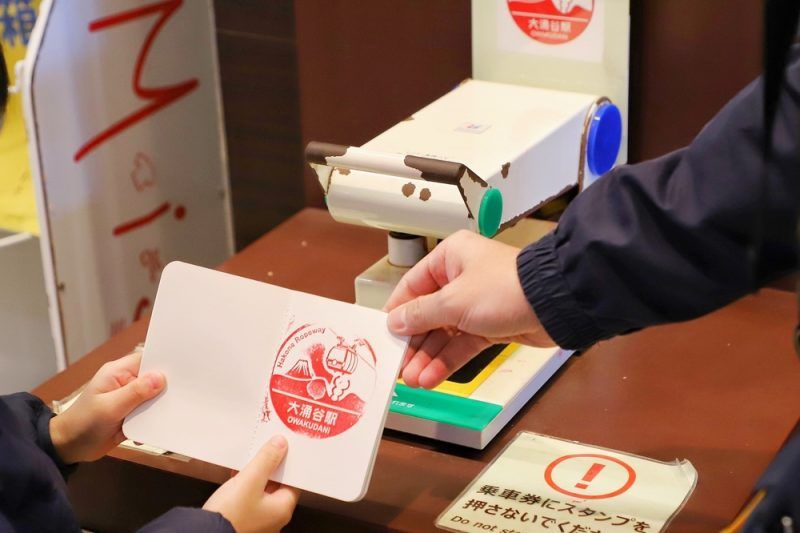
What size is the Eki stamp book?
Eki stamp books come in a variety of sizes, but the most common one is about the size of a passport and contains around 50 pages. These books typically have thick pages to prevent the ink from seeping through.
They are available for purchase in major bookstores in Japan, often in the Foreign Book section, as well as online. They typically cost around ¥650.
If you don’t feel like splashing out for an eki stamp book, you can just use any notebook or even surface that you like. Additionally, most eki counters also have a stack of loose papers available for stamping if you don’t have anything else at hand.

Do all train stations in Japan have stamps? Does Tokyo station?
The majority of train stations in Japan, including small rural stops and bustling city hubs, have their unique eki stamps . Tokyo station, as a central hub and a symbol of the city’s energy and history, indeed has its own eki stamp.
Its design beautifully encapsulates the station’s iconic red brick façade. Each stamp is an artistic representation of the station’s character, so Tokyo’s stamp is as grand and distinctive as the station itself!
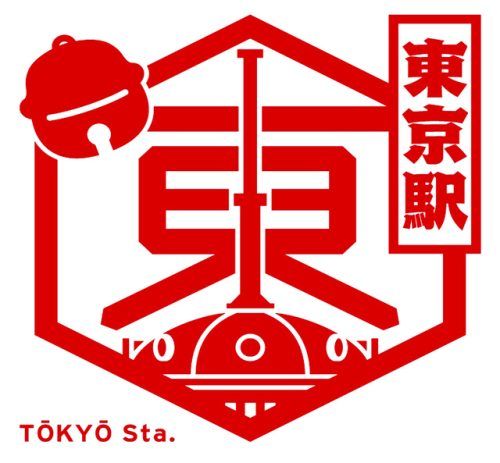
Collecting eki stamps is more than a fun pastime; it’s a unique way to connect with Japan’s culture and history. Each stamp represents a piece of the country’s vast railway network, linking the snowy peaks of Hokkaido to the tropical beaches of Okinawa .
So, as you journey across Japan , take a moment at each station to seek out its eki stamp. It’s a tangible, entertaining way to document your travels and keep the memories of your adventures alive.
Related posts
Related tours & activities.

COMMENTS
Japan stamp books: The history and culture. Originally believed to have been a way of recording receipts for monetary donations or copies of sutra given to temples and shrines, the books are also thought to have been a way of proving your travel was of a religious nature during strict travel restrictions centuries ago.
Japan Travel Stamp Book 4" x 6": Japan Eki Stamp Collection Notebook and Travel Journal, 120 pages. Jeanette H Lynn. Paperback. 1 offer from $6.99. Japan Souvenir Stamp Book: Eki Stamp Collection. Lee Hollidays.
A goshuincho is, literally, an "honorable stamp/seal book" used by people visiting shrines or temples. The book is handed over to an attendant and in return for a modest fee, will be stamped with the shrine or temple's name along with the day's date. This serves as proof of pilgrimage to that location. A completed goshuincho, especially ...
To start collecting Eki stamps, first, acquire an Eki Stamp Book. You can usually find them at major train stations or souvenir shops. As you travel, visit different train stations and look for stamp stations. Use the provided stamps and ink pads to mark your book with each station's distinct stamp.
Japan Travel Journal Stamp book memories of Japan: Practical notebook to collect Japanese stamps Paperback - January 22, 2021 by Jane Bee (Author) 4.0 4.0 out of 5 stars 7 ratings
Japan Travel Stamp Book: Eki Station and Souvenir Stamp Collection Notebook Japan Travel Stamp Book (White): Eki Station and Souvenir Stamp Keepsake ; Add to Cart . Add to Cart . Customer Reviews : 3.5 out of 5 stars. 2 — Price : $5.99 $ 5. 99: $5.99 $ 5. 99: Pages : 50 : 55 : Product details.
Learn how to collect red stamps and calligraphy from temples and shrines in Japan with the Goshuinchou notebook. Discover the history and culture of this unique souvenir idea and how to buy or make your own.
Japan Travel Stamp Book (1 - 38 of 38 results) Estimated Arrival Any time. Any time By Nov 30 By Dec 3 By Dec 10 Custom date About estimated arrival This is an estimate based on the purchase date, the seller's location, and processing time, and the shipping destination and carrier. ...
Each stamp is given its own page in the book. You can use both sides of the pages in a goshuin book if you want to - this will let you collect 46 different goshuin. Or, you can just stick to having your stamps the front of the pages. The shrines will fill all of the front pages first which allows you to decide when you've filled this up ...
A pocket book-sized Japan Travel Stamp Book, or Eki Stamp Book, that you can use to collect stamps from memorable locations all around Japan! You can use this travel journal to collect Eki stamps (train station stamps) and other special location stamps at parks, tourist spots, temples, and more! It's a fun way to track your Japan travel adventures and come home with a souvenir that reminds you ...
It's a fun way to track your Japan travel adventures and come home with a souvenir that reminds you of all the places you've been to! *BONUS* This 50-page stamp book also contains a list of "Essential Japan Travel Phrases" that are good to know when you're in Japan. Size 4.25 x 6.875 in / 108 x 175 mm. 50 Pages. Matte Paperback Cover ...
The Japan Travel Stamp Book is an absolute gem for anyone exploring the Land of the Rising Sun. This beautifully crafted book not only serves as a guide but also as a keepsake, allowing you to collect unique stamps from various destinations across Japan. From bustling cities to serene countryside, each stamp captures the essence of its location ...
A goshuin book, or "goshuinchō" in Japanese, is a special notebook used to collect unique seals or stamps called goshuin from shrines and temples in Japan. These seals, created by monks or shrine priests, contain the site's name, visit date, and sometimes prayers.
Photo: Bunkichi Chang / CC BY 2.0 Goshuincho typically come in two sizes: 18cm by 12cm, or 16cm by 11cm.They're specifically made in these sizes to ensure that all temples or shrines' goshuin can fit on the pages. The books are typically priced anywhere between ¥1500 to ¥3000, although those with extremely detailed designs are, as you might expect, much more expensive.
Japan Travel Journal, Japan Gift, Custom Japan Vacation Notebook, Japan Honeymoon Valentine's Day Gift, Japan Sketchbook, Travel Memory Book. (1.1k) $29.99. $33.32 (10% off) FREE shipping. The GREAT WAVE Personalized Ex Libris Wooden Stamp. Woodcut Style Design. Bookplate Stamp. Gift for Teacher.
Personalized 5x7 Japan travel journal, custom notebook, eki stamp book, travel journal for couple, Japanese stationary (14) $ 26.72. Add to Favorites Japan Travel Book: "Your Guide to Japan" - Tokyo Holiday Planner - Paperback Non-Fiction - Japan Gift - Tokyo Trip / Holiday ... Many of the japan stamp book, sold by the shops on Etsy, qualify ...
Kamakura. 6 April 2010. Kasuga Grand Shrine. Nara. 31 March 2010. Published: January 12, 2023 - Last updated: March 20, 2023. A goshuin is a red stamp collected from a Japanese Shrine or Temple in a special book. It can be a unique and interesting souvenir of your travels in Japan.
The Japanese temple red-stamp notebook is a small book that you can bring to the thousands of shrines and temples around Japan. It is called the "Goshuinchou". Its literal translation is the "Honorable red-stamp notebook". With a name like that, it actually makes stamp collecting sound awesome.
4" x 6" Travel Journal for Eki Stamp Collecting, while traveling around Japan. 110 numbered pages (55 sheets) Each page carries the Japanese symbols 駅スタンプ (Train Station Stamp)
Japan Travel Book: "Your Guide to Japan" - Tokyo Holiday Planner - Paperback Non-Fiction - Japan Gift - Tokyo Trip / Holiday ... travel stamp book - hardcover, kawaii, japanese (6) $ 25.84. Add to Favorites Japanese Origami Book - Seasonal Origami Flower Decoration, Fold and Cut, Easy and Cute (PDF) (784) $ 4.00.
Eki stamps were first introduced in 1931 at Fukui train station. The aim was to encourage local tourism, particularly among young people, but has since spread to a widespread tradition. Collecting Japan train stamps has become a quest to gather as many unique 'signatures' from different stations. Although, because, there are over 9,000 ...
This item: Japan Travel Stamp Book . $5.99 $ 5. 99. Get it as soon as Thursday, Nov 9. In Stock. Ships from and sold by Amazon.com. + Eki Stamp JR Passport Best Stampu Collection Book ( Non-Regional ): 駅スタンプ Eki Stampu Japan Rail and Travel Journal. $7.98 $ 7. 98. Get it as soon as Thursday, Nov 9.
Hardcover Sketch Book, Square Sketchbook with 120LB/200GSM Thick Drawing Paper, 120 Pages/60 Sheets Sketch Pad for Adults and Kids, Large Mixed Media Sketchbook on 2 Pack 8x8 Inch 4.5 out of 5 stars 45